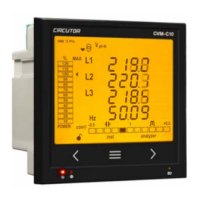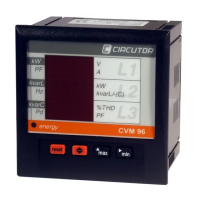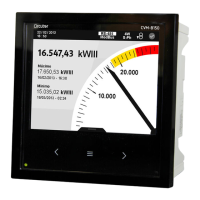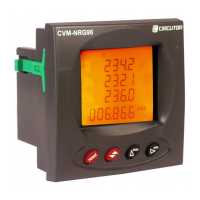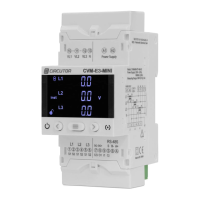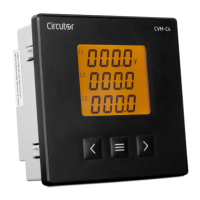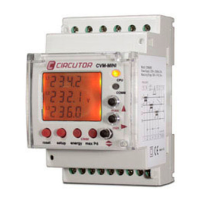Table 14 (Continuation): Measuring parameters of the CVM-C11 (Global).
Parameter T1 T2 T3 ∑
Cost - Generation C C C C
CO
2
Emissions - Consumption C C C C
CO
2
Emissions - Generation C C C C
No. of hours C C C C
4.1.1.- THD CALCULATION
The device can calculate the Total Harmonic Distortion (THD) using the fundamental component of the
signal (THD) or the effective component (RMS) (thd).
For example, the equations for the calculation of the Total Harmonic Distortion of Voltage are:
=
Where V
1
= Is the fundamental component.
=
=
Where V
RMS
= is the effective component (RMS).
The calculation method to be used by the device is selected in the configuration menu, see “6.13.- THD
CALCULATION”.
4.1.2.- MAXIMUM DEMAND
The maximum demand is the average instantaneous measurement over a specific time interval, usually
15 minutes. There are several ways to calculate this parameter:
Fixed Window (by block)
This is the calculation of maximum demand in a specific interval (normally the integration period =
15 minutes). Once the number is calculated, the value is saved and a new calculation for the next 15
minutes begins. The result would be 4 values per hour.
P
t
Fixed Window
Integration period
Integration period
Sliding window
Calculation time
Figure 28:Fixed window.
41
Instruction Manual
CVM-C11
